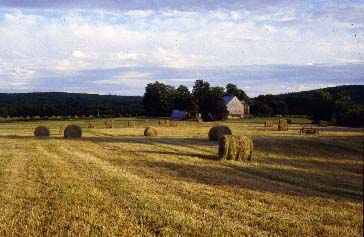
Instructor: Prof. D.G. Patriquin (Biology Department)
Subject Matter: Agroecosystems, which are defined spatially as individual crops or farms, occupy approximately 35% of the ice-free land area. Biodiversity varies from enhanced to impoverished in comparison to the pristine systems that were converted to agriculture. Agroecosystems are important in our daily lives, and have significant impacts on adjacent ecosystems and on global ecological processes, yet they are overlooked in most university biology curricula. This class provides an introduction to agricultural systems, viewed from an ecological perspective.
Presentation/activities:The first 8 weeks will be spent studying and discussing basic factual material and concepts, doing numerical problem solving exercises, and searching for and evaluating relevant data bases on agroecosystems. Through this period, students will work in groups, and learn to communicate and build a common data base using Web based tools. In the final four weeks, the accumulated materials, new expertise, and team work skills will be applied to build an Agroecosystems site on the Web.
Prerequisites: Biology 2060 or Permission of the Instructor.
Text:
|
|
Joy Tivy 1990
Ch1. The agro-ecosystem
|
Assessment: based on 6 categories of endeavor (tests on factual material, short research assignments, special topic report, contribution to group activities, attendance, and final exam) all of which students must complete, however, students can choose, within broad limits, how to distribute marks between the different categories.
When and Where: The class is offered in the second semester, beginning on Monday January 5. Students will be admitted up to the end of Wednesday, Jan 7. The class meets Mondays and Wednesdays 12:30-13:30, in LSC 206 (located in the link area between Biology and Chemistry) and on Fridays 12:30-14:30 in a computer learning lab in the Killam (Room B400). Demonstration materials will be placed in LSC 6081.
Registration: Obtain a class addition form from the Registrar's office and get it signed by dp (LSC Room 6076) not later than Wednesday, January 7, 1998. To set up an appointment, send an e-mail message with your name and phone number to David.Patriquin@Dal.ca